Chefs Godfrey Laforteza, Don Baldosano, Chele Gonzalez, and Tatung Sarthou discuss their love for local ingredients in celebration of Filipino Food Month.
As the Philippines is an archipelago made up of many subcultures (and dialects), there is no singular definition for the Filipino taste; it is as diverse as the country’s people, environments, histories, and traditions. Yet it is also something deeply personal, serving as a reflection of an individual’s roots and relationship to the country. Beyond incorporating local ingredients into their dishes, many of today’s best chefs share a deep appreciation for the cuisine that’s steeped in their own experiences and values.
In celebration of Filipino Food Month, Lifestyle Asia spoke to Godfrey Laforteza, Don Baldosano, Chele Gonzalez, and Tatung Sarthou—four chefs who champion endemic ingredients in their restaurants, and in doing so, highlight the the country’s rich culinary heritage while paving the way to its bright future.
READ ALSO: Beyond Customary Flavors: The Multifaceted Landscape Of Filipino Food
Godfrey Laforteza
Chef Godfrey Laforteza, the talent behind Newport World Resort’s Casa Buenas, shares a close connection with his country’s endemic ingredients, which he spotlights through the restaurant’s delectable roster of Filipino-Spanish dishes.
To him, the Philippines is rife with as many possibilities as there are islands and people. “We have a diverse culture and heritage. Each region or province or city in the country has their own way of preparing meals. Add to that our rich history of external influences,” he told Lifestyle Asia in an exclusive interview.
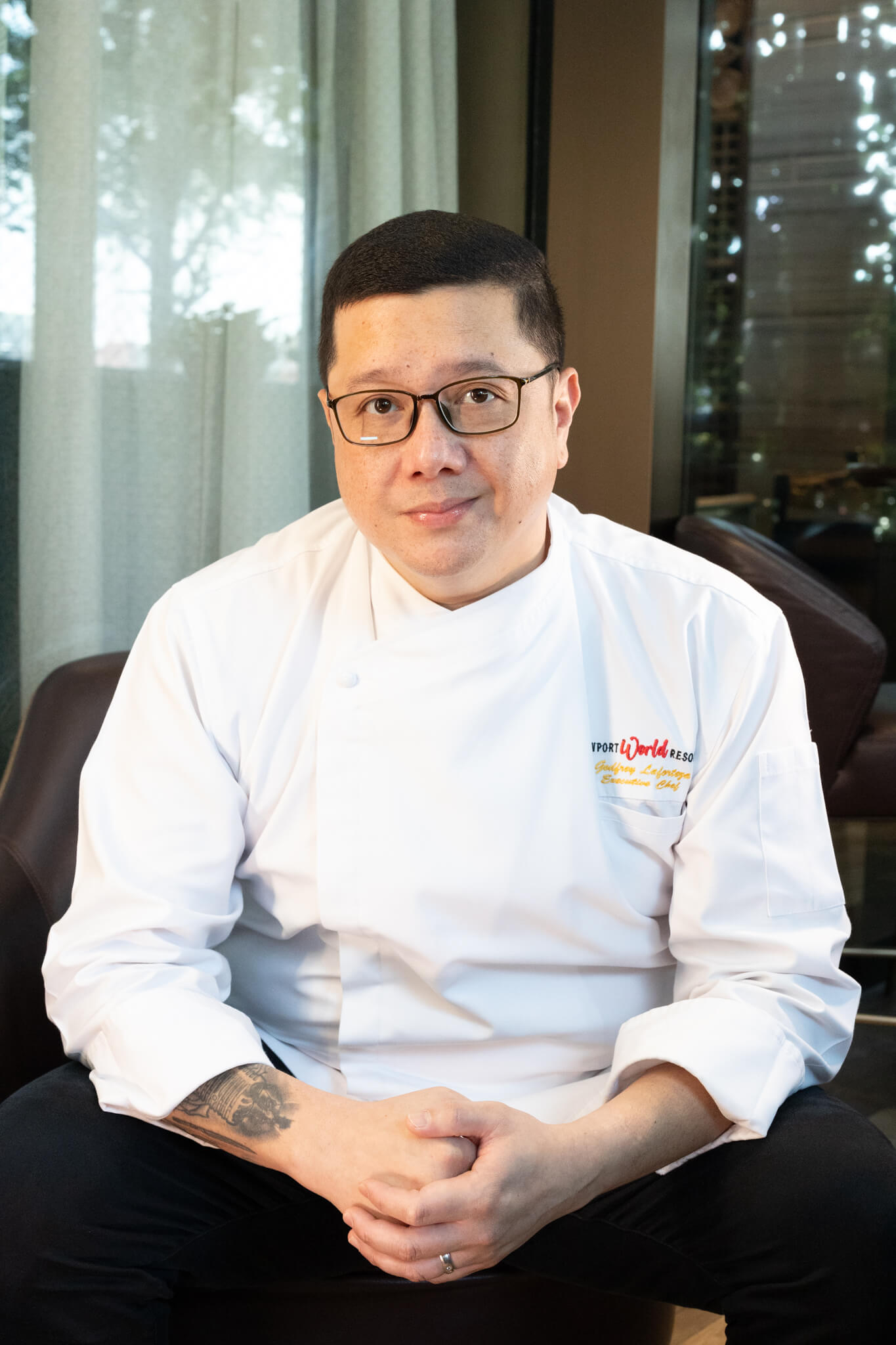
Beneath all the innovation are traditions that run deep and true, always bringing a taste of the country to diners everywhere. “There definitely is a lot of variety in the food scene now. But what’s truly remarkable about it is, at its core, you know it’s still Filipino food,” he added.
Heirloom Recipes and Sustainability
When preparing and designing the menu of Casa Buenas, the chef makes it a point to use heirloom recipes that showcase the best of what the country has to offer. He mentioned the restaurant’s special Fiesta de Moldero dining offering as an example, as it ties together a Spanish and native Mountain Province menu.

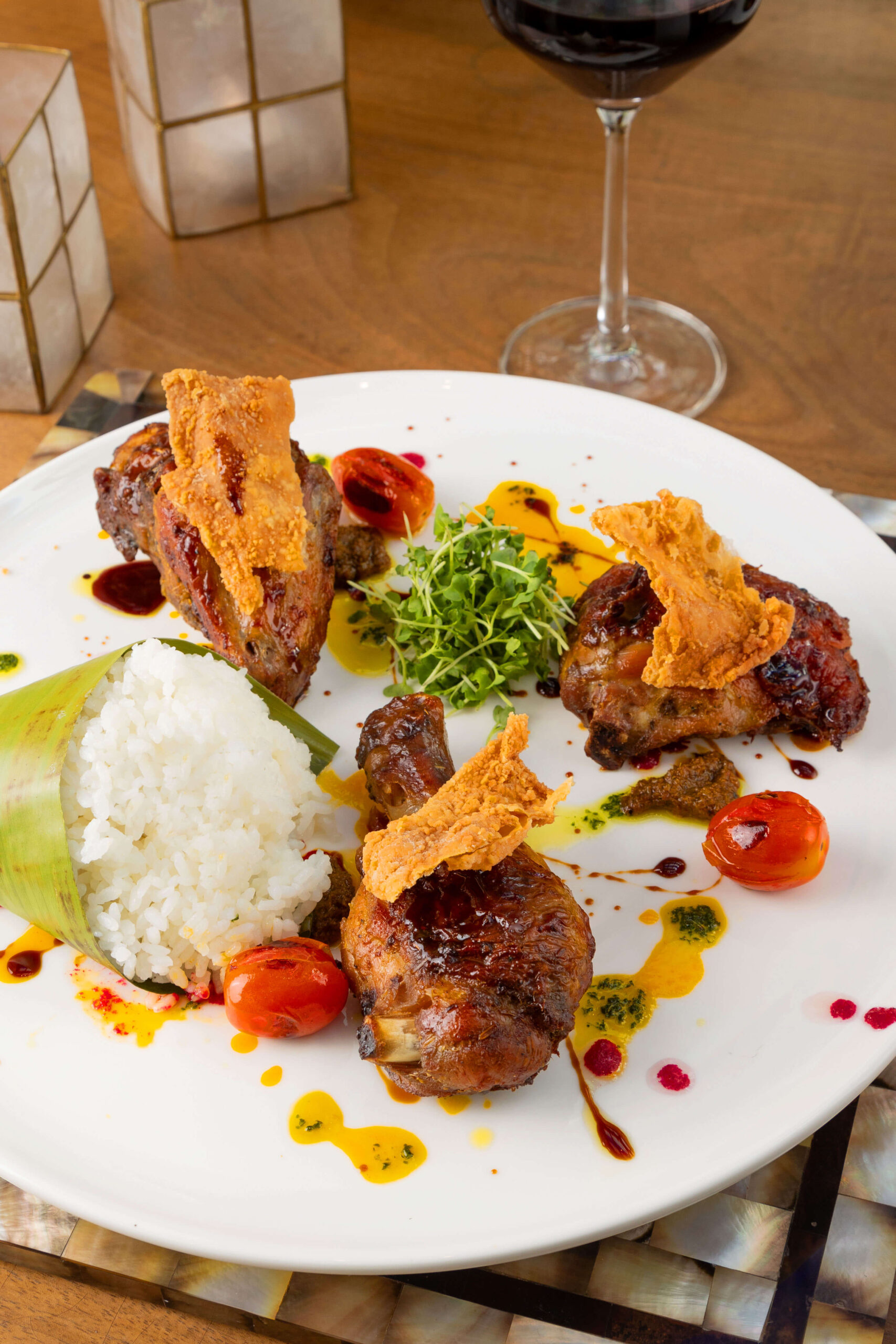
“Some of the dishes are in fact heirloom recipes from the Molderos [a Spanish-Filipino family descended from Don Manuel Moldero, a Spanish soldier] themselves,” he explained. He also enjoyed developing a new recipe for sinuglaw [a dish of pork belly and fish ceviche] at Casa Buenas.
The Comforts of Home
Like many Filipinos, Chef Godfrey’s connection to local cuisine is one built from personal stories of love and family. This is most evident in his favorite local dish, his family’s version of Callos de Montserrat [stewed pork in a tomato base typically served with rice], a recipe he holds close to his heart.
“My wife taught and inspired me to cook, and my mother-in-law pushed me to explore a culinary career,” he explained. He also cites other local dishes as his go-to comfort food options. “Adobo [a marinated meat dish] is a quintessential Filipino dish, and so is the Kapampangan sisig [a sizzling dish usually made of pork parts] which Hilton Manila is offering for Filipino Food Month,” he shared.


To the chef, most Philippine dishes are comfort foods in their own right, as they elicit happy memories from every Filipino. “It’s the food we grew up with,” he stated succinctly.
Something about local ingredients that stands out to him is the way in which Filipinos prepare them in their dishes. “Historically, the way we cook food and prepare our meals is very intuitive. We used to live off the land, and that informs how we use the different ingredients that are endemic to the specific regions in the country,” he expounded.
Preserving a Legacy
Food is a form of identity, and one of the most important, ever-evolving cultural heirlooms there is. To Chef Godfrey, championing local ingredients is a way of preserving the country’s traditions. “For the month of April actually, we once again partnered with the National Commission for Culture and the Arts for the Filipino Food Month,” he shared. “Across the property [Newport World Resorts], we have 11 restaurants that are offering special Filipino Dishes to help promote our rich culinary heritage.”
Promoting local ingredients is also a way of supporting Filipino farmers, fishermen, and food producers at large with sustainability at the forefront. “I have access to some of the best ingredients in the market,” he shared. “We have a personal commitment to sustainable living. So we prioritize healthy, responsible, sustainable sourcing.”
The chef believes that there is much that can be done with the country’s natural gifts, but this can only be achieved with better practices. “It’s also a matter of being responsible about what we take from the Earth. I want to see more sustainable use of our resources,” he stated.
Don Baldosano
Chef Don Baldosano’s restaurants, including Linamnam MNL and the newly-opened Bombvino Bodega, all explore the possibilities of Filipino food. One can see the chef’s dedication to championing local ingredients as he gets them straight from their sources, making the most of the produce, meats, seafood, and spices that each season brings.
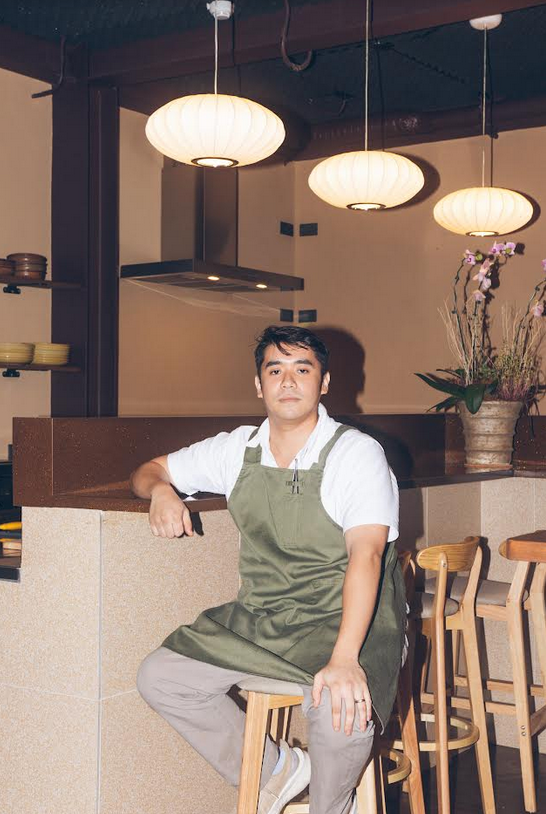
“One of the things I really love about the local food scene is seeing chefs doing their own versions of Filipino cuisine,” he explained in an interview with Lifestyle Asia. “Every time you see it, it’s a different facet of local food, and it shows how interesting our food culture is and how nice Filipino food can be.”
The Season’s Blessings
Chef Don discussed how he often changes his menu to incorporate local ingredients that are available at a particular period. “We work directly with farmers and fishermen, so whatever they can give to our restaurant, that’s the only thing we work with,” he elaborated. “One of the things that we’ve tried to help people understand is that there’s a seasonality in the Philippines.”
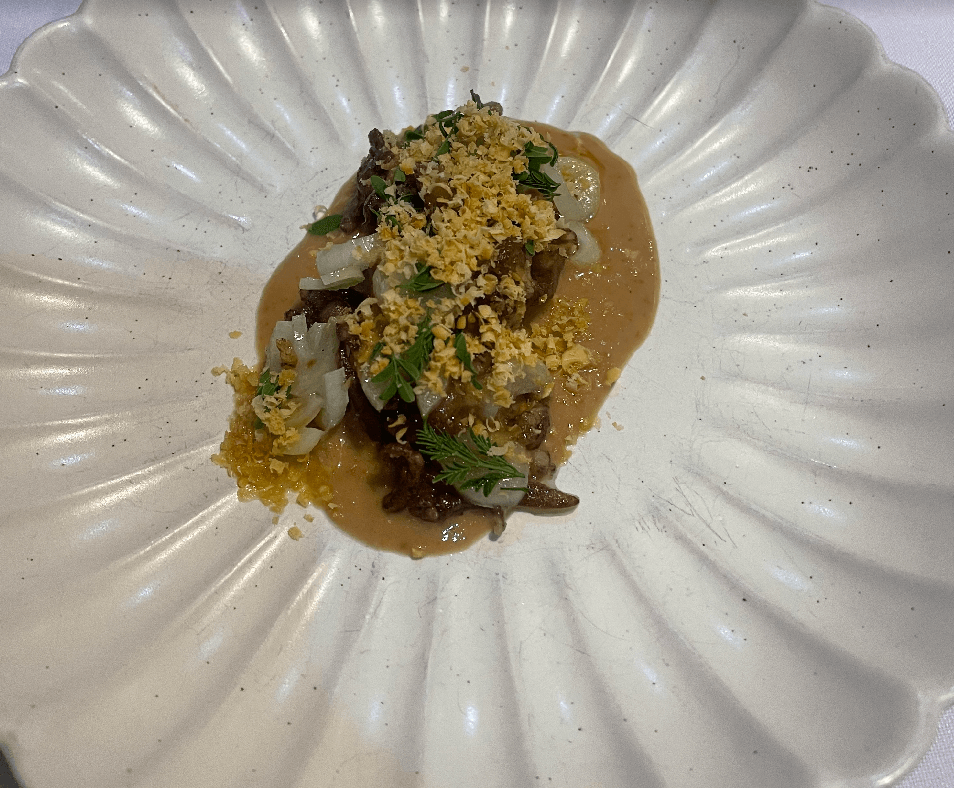
He explained that it is rather reductive to say that the Philippines only has rainy or sweltering weather, and hopes that using endemic ingredients will showcase the country’s microseasons in greater depth.
Gifts of the Land
The chef is particularly fond of the Philippines’ many rice varieties, which he believes more people should learn about. “My favorite thing to cook is really rice, because it shows our culture as Filipinos,” he expounded. “Paying respect to all these grains that we discover is one of my favorite things to do.”
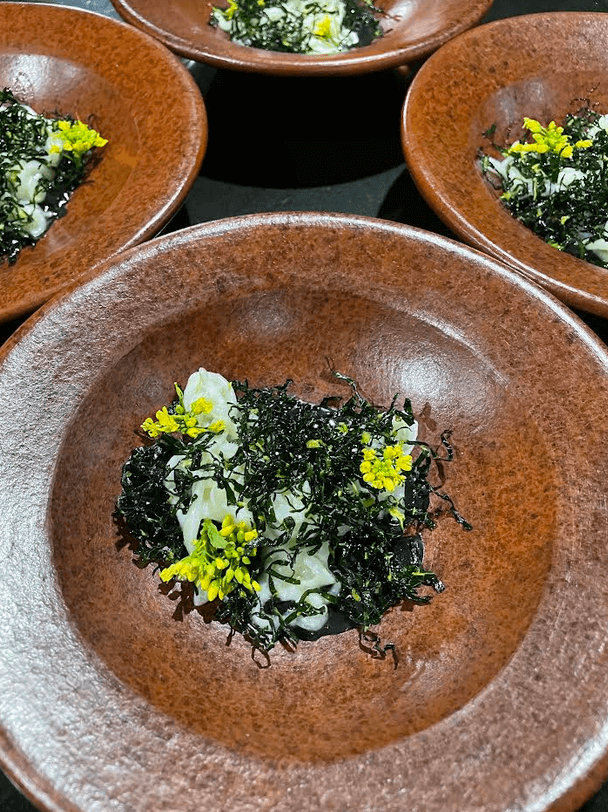
At Linamnam, he often takes a rare grain of the season and cooks it as sunog na kain [burnt rice], with burnt butter and soy sauce that calls to mind the flavors of grilled rice on a sizzling plate, yet also highlights the best qualities of the grain. A rice that’s captivating him at the moment is Camoroso from the Visayas region, which his own aunts help him acquire from farm to kitchen.
Though Chef Don usually makes it a point to shake up his menu, he often returns to using the libas leaf in dishes like sinigang [a sour soup with meats and vegetables]. “It’s a sour leaf that we often use in my home city of Capiz. It shows a different side of sinigang that not many people know about, since the use of sampaloc [tamarind], bayabas [guava], and kamias [bilimbi] is more common.”
Seafood Pride
With his family hailing from Panay’s seaside city of Capiz, Chef Don discussed how exceptional the country’s seafood is, if one knows where to look. He mentioned that his comfort dish is a simple Sunday meal that he and his father share: quickly baked oysters (in the oven for around two minutes so they are still a bit raw), which they serve with lato [seaweed], vinegar, and chili.
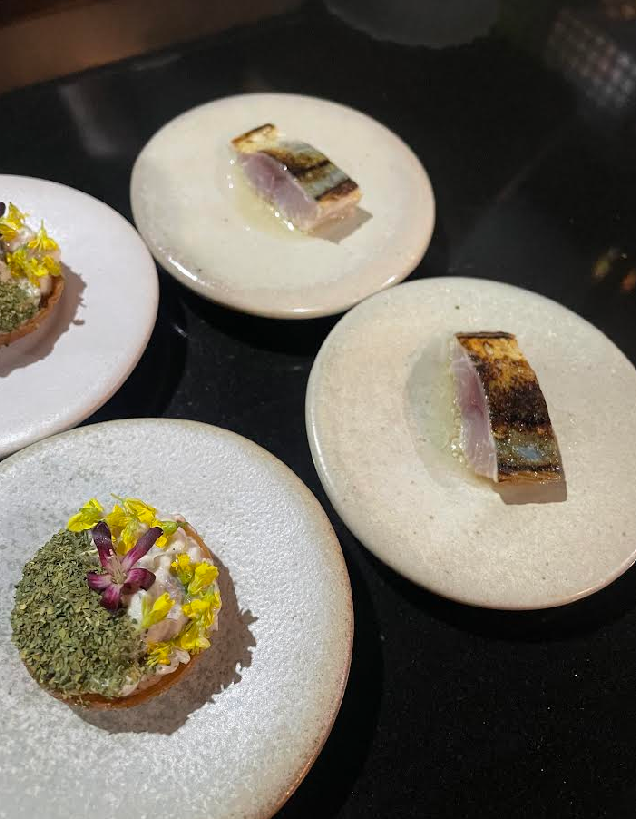
“It brings me back to my childhood,” he intimated, as the chef and his family grew up around the sea’s finest and bottles of different vinegars. “We have the best seafood in the world. I don’t understand why not so many people see that yet, but it’s one of the things we [at Linamnam] try to push for. You don’t have to get it from Japan, you don’t have to get it from the U.S., just get it from Quezon, Capiz, or Mindanao…it’s always good.”
An Educational Dining Experience
As part of his efforts of promoting awareness on Filipino cuisine and ingredients, Chef Don strives to personally explain his dishes to all his guests, turning a sumptuous dining experience into an educational one as well.
“The most important thing in a restaurant isn’t just the food,” he explained. “It’s the message that we give.” Whether guests are foreigners or locals, Chef Don wants to make their visit a memorable and inclusive one, letting them immerse in the archipelago’s many traditions, even if they didn’t come from a particular province or the country itself.
“The future that I envision for Filipino cuisine is to have chefs and diners actually respect ingredients, because there’s this notion that local ingredients aren’t that good,” he stated. “One day, 10 years from now, I hope to see even more chefs using only Filipino produce and seeing the possibilities of our own ingredients.”
Chele Gonzalez
Chef Chele Gonzalez has made a home in the Philippines for more than a decade, and has since launched a number of successful dining establishments, including the famous Gallery By Chele. When he first arrived in the country, the Spanish culinary talent was amazed to find so many new and exciting ingredients, all of which offered him a better understanding of Philippine culture and history.
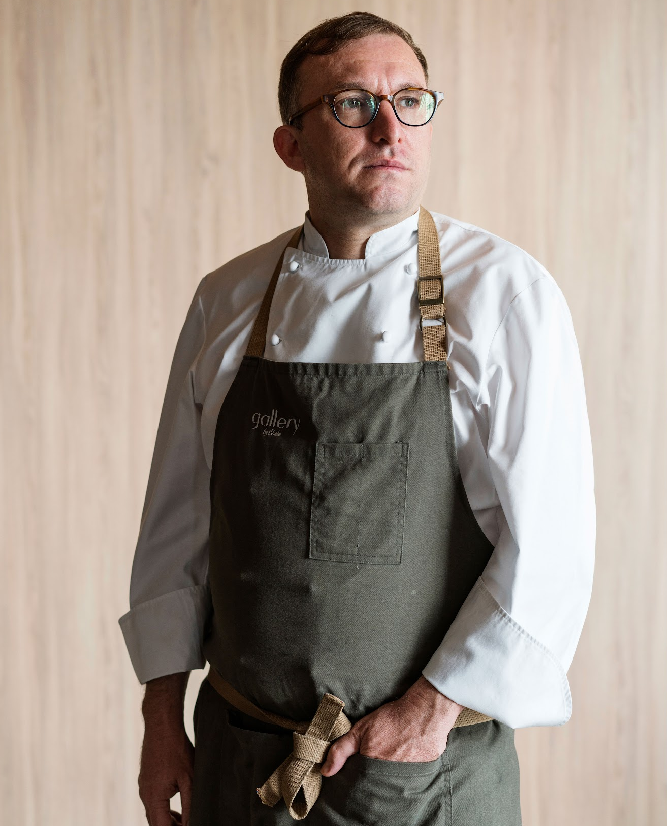
Meaningful Immersion
Though Chef Chele doesn’t place labels on his cuisine—preferring to explore, experiment, and see where inspiration takes him—he makes it a point to use a variety of local vegetables, meats, spices, and more in his cooking.

“When you are out of the kitchen, you are exposed to different things that will give you the creativity to go back and do something different,” he explained in an interview with Lifestyle Asia. It’s through his explorations of the country that he was able to thoroughly immerse himself in its traditions and fall in love with it in the process.
“I see something that is very magical and unique in a lot of the country’s indigenous communities, and their culinary heritage,” he elaborated. “I do not think there are a lot of places in the world that let you immerse in the past, where you can go a hundred years back.”
Food Spotlight
Like many chefs, Chele lets his fascinations lead him, trying out different techniques and ingredients that strike his fancy at a certain time. So his favorite local ingredients will depend on what catches his eye, though he cites kalamansi [calamondin, an endemic lime] as one of his first loves. He describes it as an interesting fruit, since its skin possesses mandarin notes while its pulps contain a very sour flavor that is entirely unique to it. To him, it’s also representative of the delectable sourness present in many Filipino dishes.
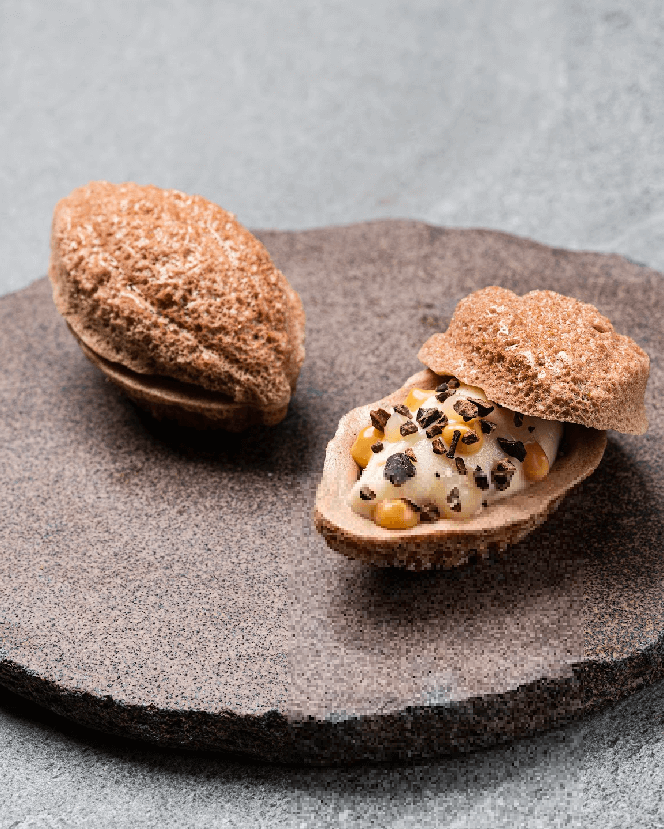
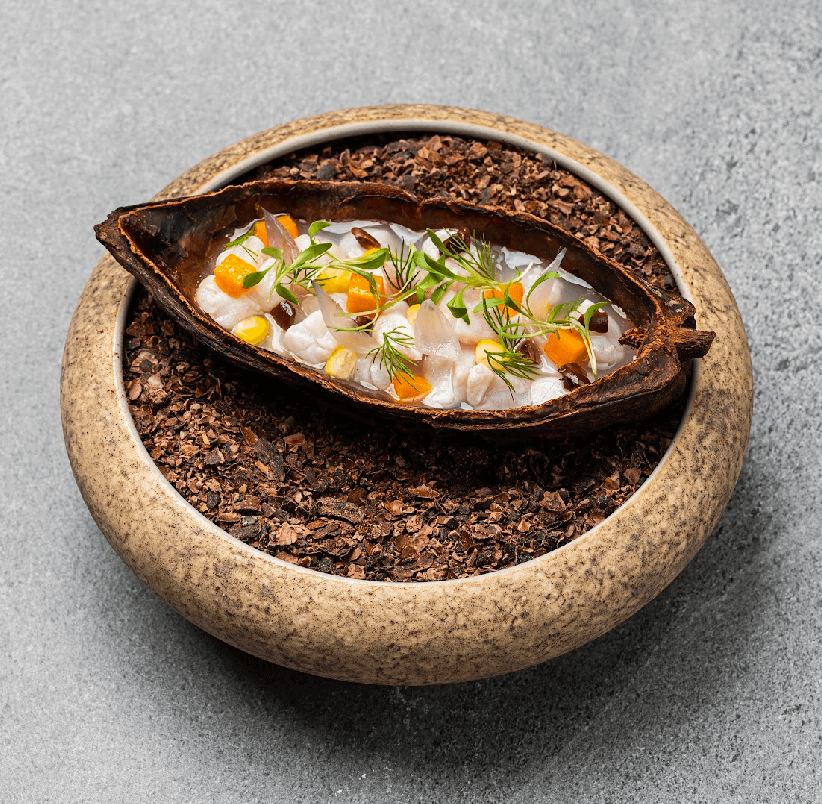
The Philippine ube [purple yam] has also been a favorite of the chef, since it’s not something one commonly finds outside of the country. He also mentions the delightfully wide assortment of rice varieties within the mountain provinces he has visited. Another ingredient that he feels ought to be highlighted more is the endemic cacao, which goes beyond its identity as chocolate.
“We haven’t done a lot of research on cacao as a tropical fruit,” he explained. This is why the chef has placed it front and center in a new menu for Gallery, which aims to explore the many nuanced flavors and uses of the bean. “The industry usually just throws the mucilage or the pulp into the garbage in the process of getting the beans to create chocolate. We have witnessed that there is just so much more to this amazing produce,” the chef shared in an official statement on his latest cacao tasting menu.
Local Delights
As for Filipino dishes that the chef personally enjoys eating, he mentioned a fondness for inasal [a grilled chicken dish], which he believes deserves more exposure internationally. “It’s something that anyone can eat on any day,” he explained. For the chef, the dish is representative of the culinary sensibilities of Southeast Asia with its use of lemongrass, ginger, and spices that are common to the region.
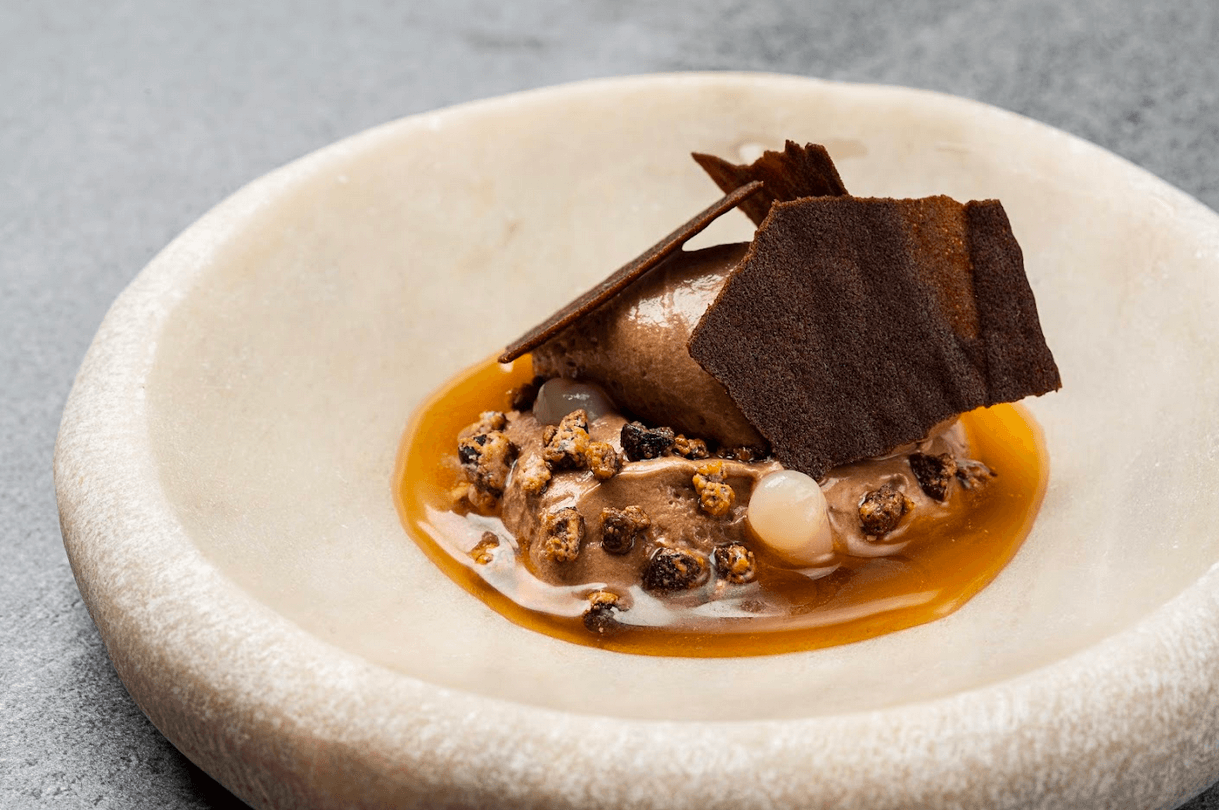
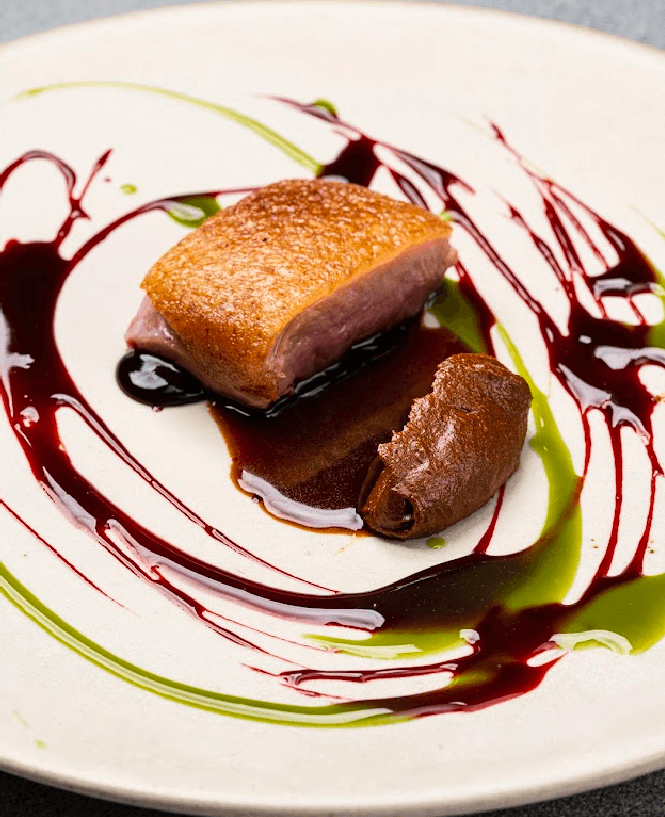
He also mentioned kinilaw [a raw seafood dish like ceviche], which he feels deserves more attention. “There should be a big campaign for it, because it’s one of the most ancestral dishes in the country, something pre-colonial. It’s got pure, Filipino DNA, and is something that should be showcased.”
Like Chef Don, Chef Chele praises sinigang for its unique flavor and diversity as a dish. “After traveling around the country and meeting a lot of indigenous communities, I learned that each one of them has their own version of sinigang, depending on their area. They can use tamarind, but they can also use herbs and fruit.”
Recognition Starts with Pride
Quality ingredients are an integral part of good food, yet in order to unlock their best qualities, one must trust that they possess them to begin with.
“We need to change that mentality that if it’s local, it’s not quality,” he stated. “If we don’t believe that local ingredients can be quality, they will never be quality. You need to give time, knowledge, and love for an ingredient to be good.” To him, this kind of care takes the form of investment in the development of food production and storage.
He hopes it continues to foster a stronger community where tradition and contemporary innovation enrich one another. He explained that it’s important to keep an open mind when it comes to the growth of any form of cuisine.
“The only way to reach a deeper level of understanding as a chef is to be curious. If you only do what you know how to do, you will never evolve,” he expounded. “For me, I was in a new country with different ingredients, and I was trying to understand everything that was around me.”
The chef envisions a future where people will travel to the country for more than relaxing beach trips or business matters. He hopes the Philippine food scene will keep creating enough curiosity for food lovers all over the world to recognize its rich culinary landscape, and pay it a visit just for that.
“I want people to think ‘Let’s go there for a few days or a weekend, go to different restaurants and enjoy good food,’” he shared.
Tatung Sarthou
From restaurants that serve mouth-watering local fare to his books on Filipino cuisine, it’s clear that Chef Tatung Sarthou is passionate about his country’s culinary heritage. The man behind Antipolo-based Tatung’s Private Dining and Bonifacio Global City’s Lore Manila finds that his favorite part of today’s local food scene is the newfound access to many ingredients that would have otherwise been unavailable or unknown, thanks to online shops and the accessibility of knowledge across various internet platforms.

“People have become very generous in sharing stories, recipes, and trivia about ingredients,” he explained. “So what’s happening is that we’re really enriching the narrative of Filipino cuisine and expanding it. Now we have more unique and interesting ingredients in mainstream menus, and it’s a very nice time to be in.
Essential Flavors
Chef Tatung is particularly fond of playing with the acidity found in Filipino cuisine. “I really love working with different kinds of vinegars,” he explained. “Each region has their own unique preparation of these vinegars: different flavors or concoctions.”
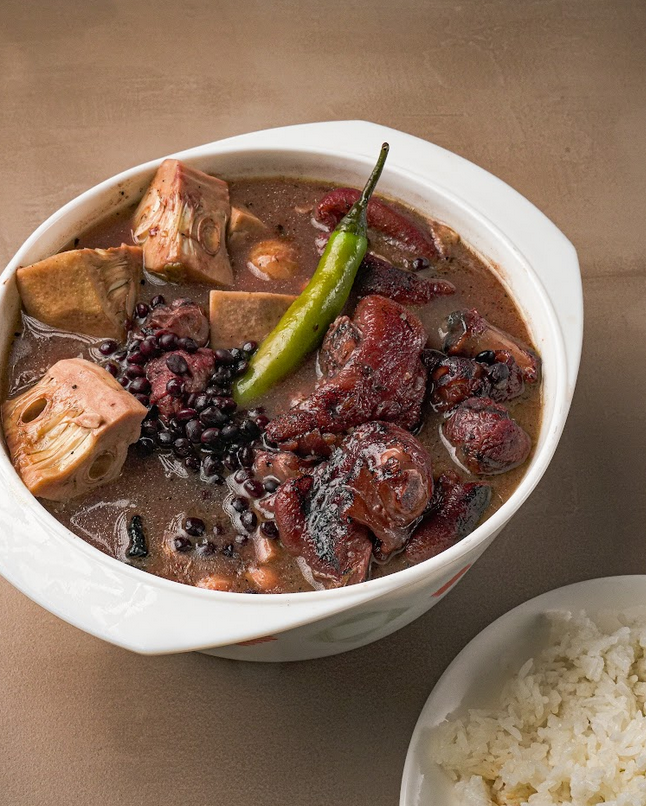
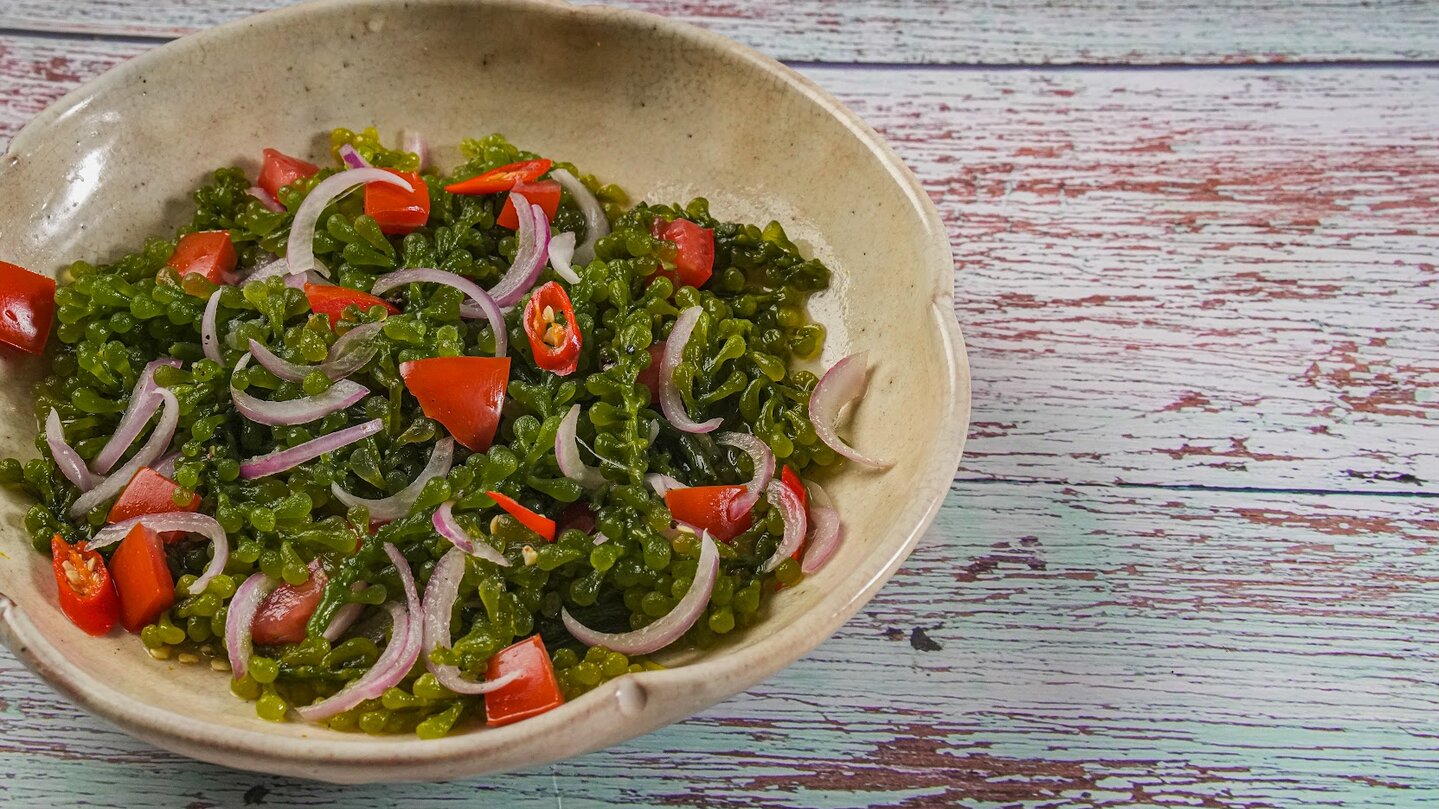
The chef also likes adding citruses like diyap to his dishes to create more nuance. “It really adds a different kind of complexity. For example, you’re cooking adobo or kinilaw: you just change the souring agent, and it changes their profile entirely.”
Fermented food is also an integral part of many Filipino dishes, with the tasty bagoong [a condiment of fermented shrimp or fish] being another favorite of the chef. “These local ingredients are very simple, but they add so much Filipino spirit,” he shared.
The Beauty of Simplicity
As for Chef Tatung’s favorite local dish to cook, he returns to the classic adobo. “It sounds cliche, but there are different versions of it. I grew up in Cebu, and the Cebu adobo is very dry, like a lechon kawali [a deep fried pork dish]; that’s from my mother’s side. My lola [grandmother] was a Bicolana [a woman from Bicol], so we’d also have adobo with gata [coconut milk] sometimes.”

He continued: “Even when you’re craving adobo, it’s not the same adobo all the time. It’s something I enjoy eating, even with cold rice.” Chef Tatung also mentioned the adobo Bisaya, a variation of the dish slow-cooked in its own fat or lard with vinegar, salt, and garlic, then served with toyo [soy sauce] on the side and rice (for the finishing touch, drizzled in the tasty lard).
Amid a very busy life, it is this kind of simplicity that Tatung finds comfort in. “For a chef, sometimes you want to eat without thinking or having to analyze the food. You just want to enjoy it without judgment,” he expounded.
Food for All
Chef Tatung’s vision for the Philippine food scene is at once pertinent and touching: to ensure that all Filipinos can eat “deliciously and with dignity.” Though this is already happening as people continue to raise awareness on the country’s amazing resources, there’s still a lot of work to be done.
While there’s a demand for local ingredients, some of them are limited in number; not every Filipino can access them, even those who actually provide the ingredients. It’s a sad and ironic reality, but something that the chef hopes will improve as more laws on local food security and development are implemented. The challenge now is to address issues on “sustainability, agriculture, distributions, and pricing,” he shared.
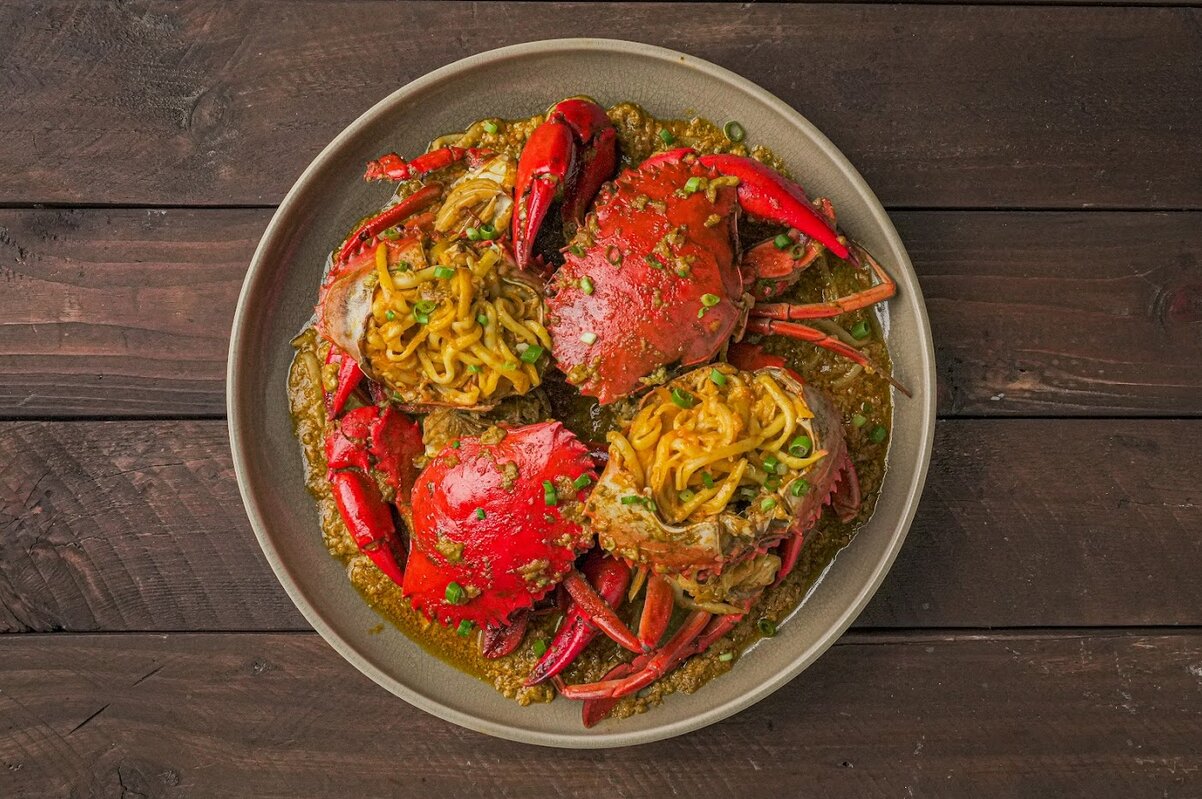
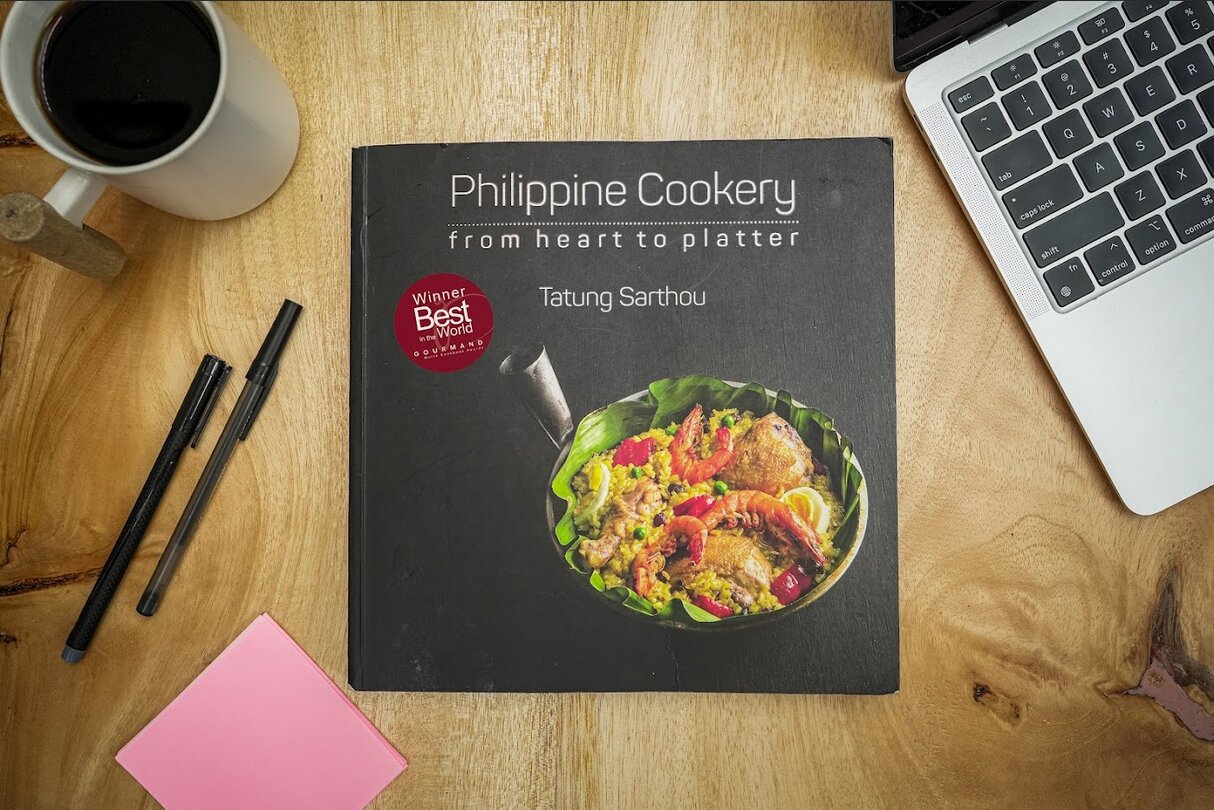
The chef also stated that some forward-thinking would be needed for Filipino cuisine to continue thriving: “It’s not about keeping the cuisine in a vacuum, like you have a recipe and try to keep it within generations, untouched. For me, it’s really about asking ‘How will we feed every Filipino delicious food?,’ the crucial questions that will really solve food security issues in the Philippines.”
More than championing Filipino ingredients, Chef Tatung wants to share his knowledge to help his countrymen create tasty food with whatever ingredients or resources they have access to.
“It’s not about championing adobo with foie gras or laing [tarot leaves in a sauce of coconut milk, shrimp paste, and other spices] with truffles,” the chef explained. “It’s about finding the kinds of food we can share on a table that’s accessible to everyone: that will define what Filipino food is.”
Photos courtesy of Newport World Resorts, Chef Don Baldosano, Chef Chele Gonzalez, and Chef Tatung Sarthou. Banner photo courtesy of Chef Chele Gonzalez.





